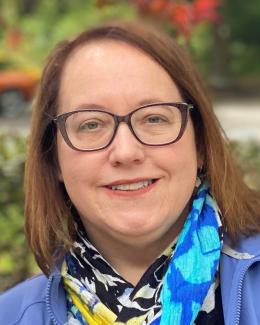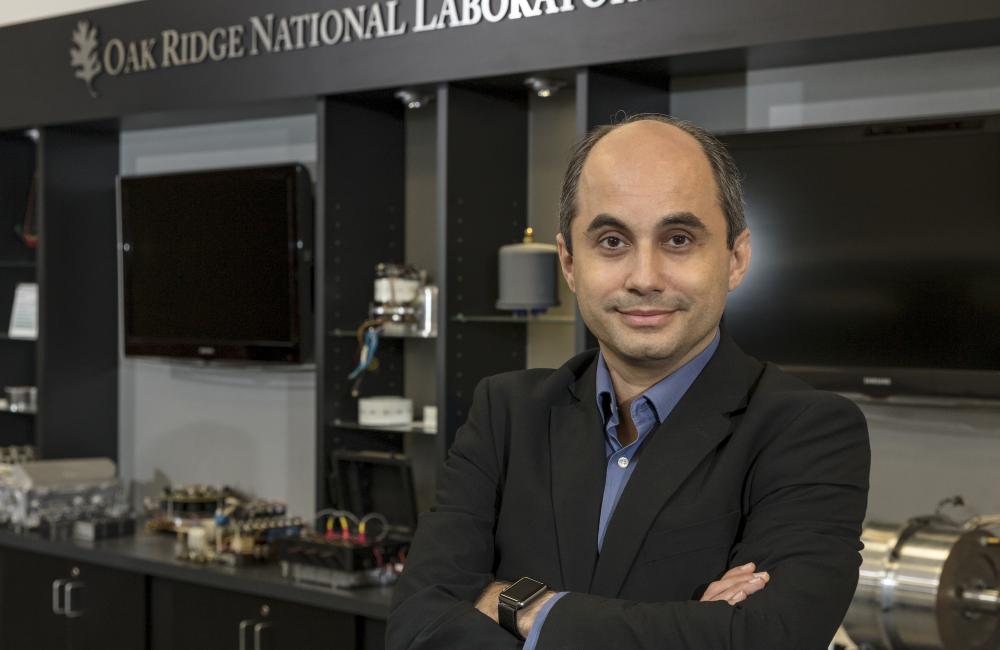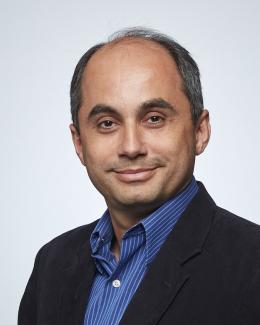A penchant for playing with the rules of thumb has pushed Burak Ozpineci’s research to the cutting edge of power electronics design for efficient, clean energy—whether that is researching new semiconductors, building new types of power inverters and converters, or creating a way to wirelessly transfer electricity to hybrid vehicles.
“Most call these creative ideas, but I call them crazy ideas,” said Burak, a group leader in the Electrical and Electronics Systems Research Division at Oak Ridge National Laboratory (ORNL). “I like to think about things that others might consider straightforward and tinker with them to create a new, better method or device.”
Burak, along with team leaders Madhu Chinthavali and Timothy Burress, has encouraged the members of the Power Electronics and Electric Machinery group to think and function like a startup company. The result most recently has been the development of wireless technology to power electric vehicles.
“I came up with that idea after finding out that the electrified transportation vision that was being discussed nationally included a folding arm coming out of a car and connecting to a side rail along the roadway. It didn’t seem to me to be the best way to electrify roads,” Burak said.
The group’s power electronics team achieved the world’s first 20-kilowatt wireless charging system for passenger cars by developing a unique architecture that includes an ORNL-built inverter, isolation transformer, vehicle-side electronics, and coupling technologies. The next target is a wireless charging system for a delivery truck in partnership with United Parcel Service. The work is funded by the Vehicle Technologies Office as part of the US Department of Energy’s Office of Energy Efficiency and Renewable Energy.
Early interest in gadgets
Burak credits the Tarsus American College—a private high school in Turkey— for his first exposure to US culture and early proficiency in English. He took an interest in robotics in his high school years and has always had a fascination with machines. Burak became interested in his chosen field when a group of friends wanted to attend a power electronics and controls class in college, and he tagged along. Finding the class interesting, Burak eventually changed his major to power electronics. He is the only one among that group of friends to have continued in the field.
After securing his undergraduate degree in Ankara, Turkey, Burak traveled to the United States for postgraduate studies at the University of Tennessee, Knoxville (UT). He joined ORNL through the post-master’s program and completed his Ph.D. with a focus on silicon carbide (SiC) power electronics in hybrid electric vehicles.
Those SiC-based electronics, also known as wide bandgap (WBG) devices, provide more power density than traditional silicon-based semiconductors and can function at higher operating temperatures with better efficiencies—making them ideal for use in applications such as electric vehicles, solar inverters, and wind turbines.
Burak’s doctoral study of WBG devices has informed his work in power electronics at the lab ever since. One of the key focus areas for his group is the development of lightweight, compact, durable, and efficient electric drive system components that will improve electric, hybrid, and fuel cell vehicles. The group has also developed a unique testing facility to evaluate the performance of any WBG device.
Networked inside and outside the lab
In addition to his position as group leader, Burak is manager of ORNL’s Electric Drive Technologies Program, a DOE initiative that targets development of power electronics, electric motors, and electric drive systems to encourage greater adoption of electric vehicles. He also holds a joint faculty position with UT’s Bredesen Center for Interdisciplinary Research and Graduate Education.
Being widely networked in the power electronics field has driven Burak’s research forward, as have the many opportunities for collaborative work at ORNL.
“We do fun, creative research here at the lab,” Burak said. “There’s always something new coming up from somewhere.” In the last few years, his group has also worked on projects from the Building Technologies Program and Solar Program, and is now conducting more research in the area of electrical grid resiliency and security.
“I’ve told my group we need to be working on new ideas and concepts by interfacing with others, including researchers and program managers. We want to find out what we can do better next and how to use the latest tools,” including supercomputing, neutron imaging, and by leveraging lab expertise in materials and chemical sciences, he explained.
Burak’s quest for the next big idea dovetails with his nature as a technophile—an interest that has continued over the years. “I’m a gadget guy,” he said. “I’ve always liked gadgets. I’m always looking for the latest and greatest” in electronics—such as reading tech blogs and subscribing to RSS feeds to hear about the newest devices coming onto the market.
In his spare time, Burak enjoys travel, photography, and reading a variety of fiction and non-fiction. He is close to completing a photography certificate program at UT but acknowledges that most of his pictures tend to stay on the camera simply because he runs out of time to process them.




